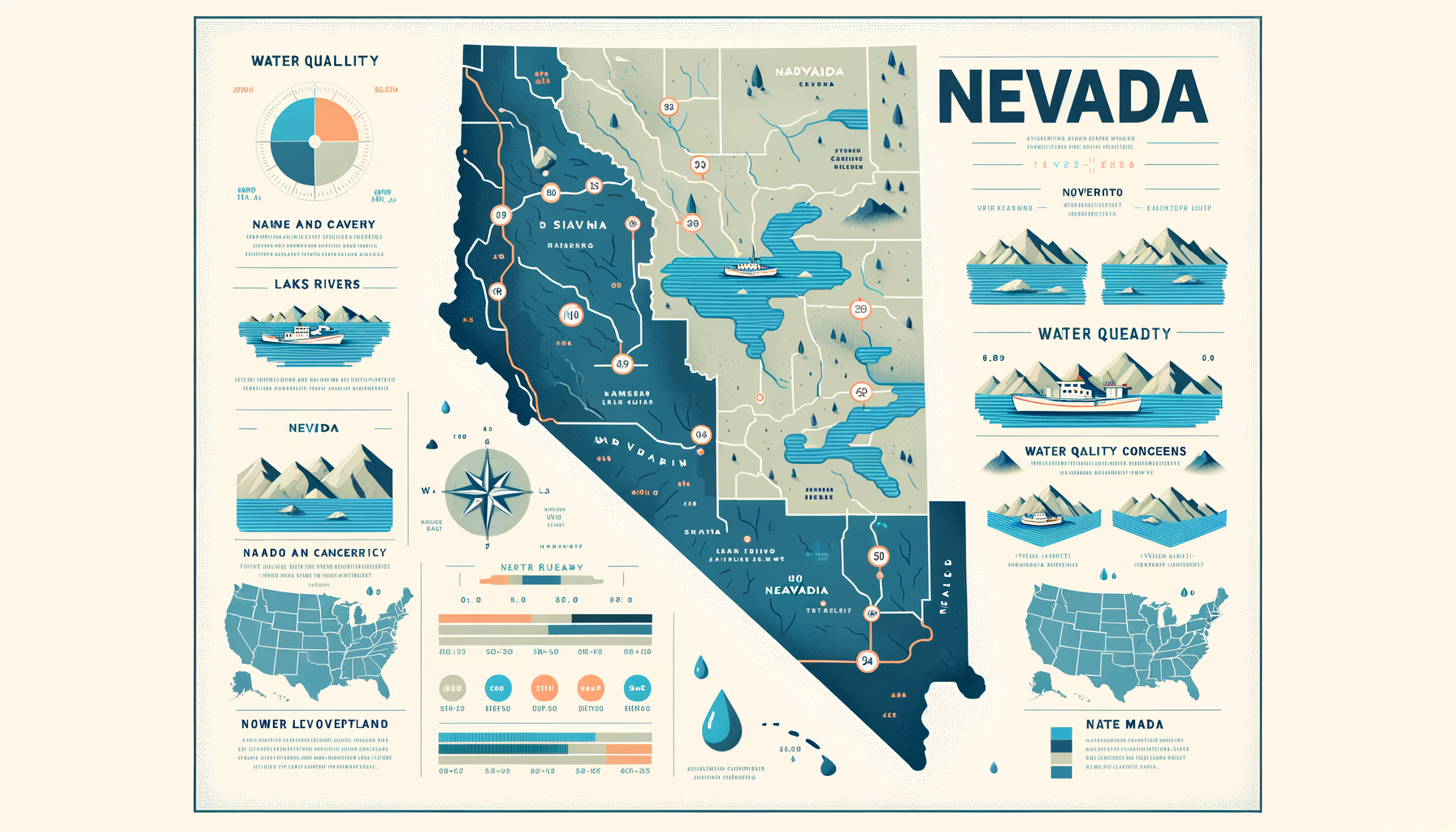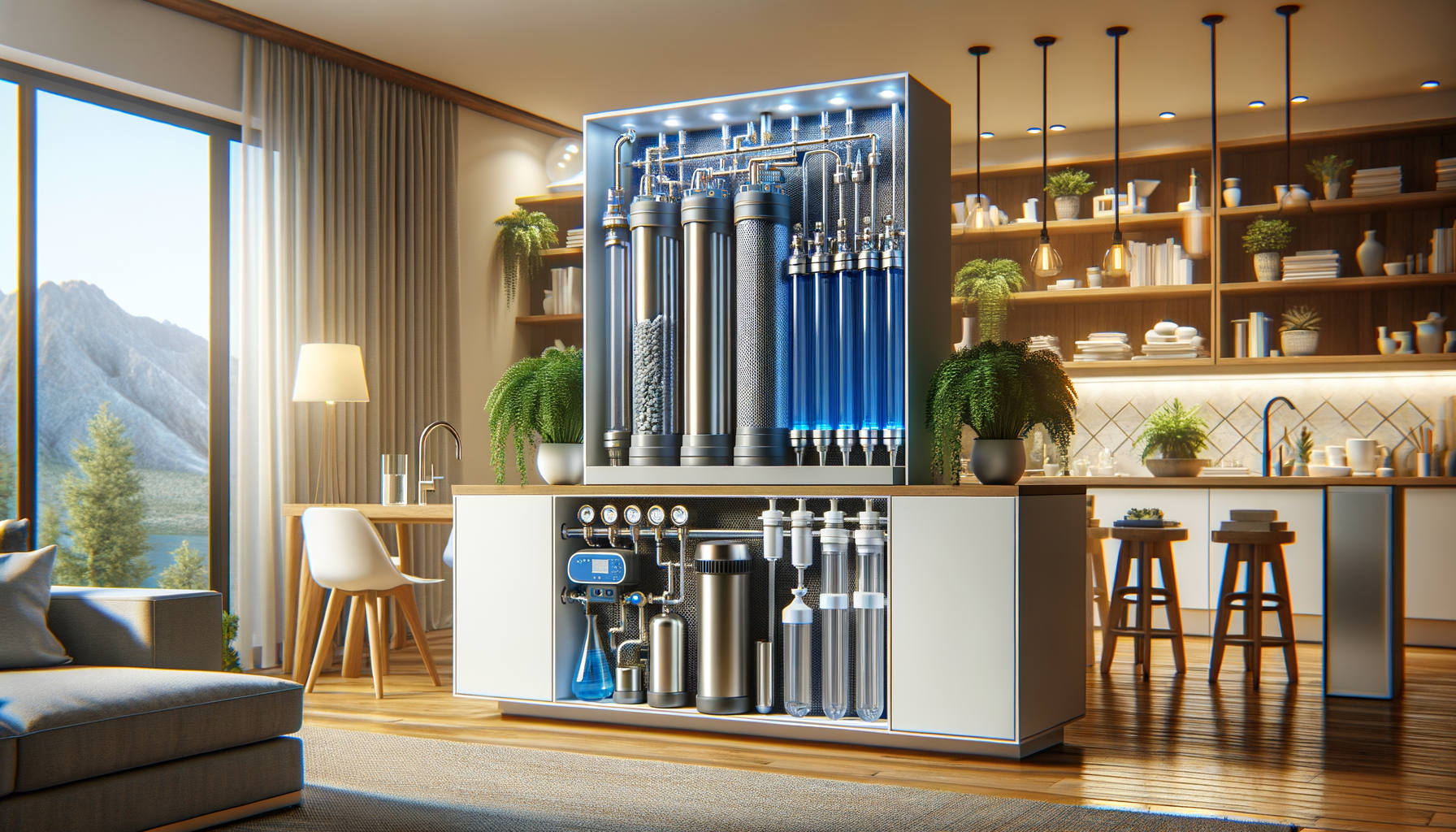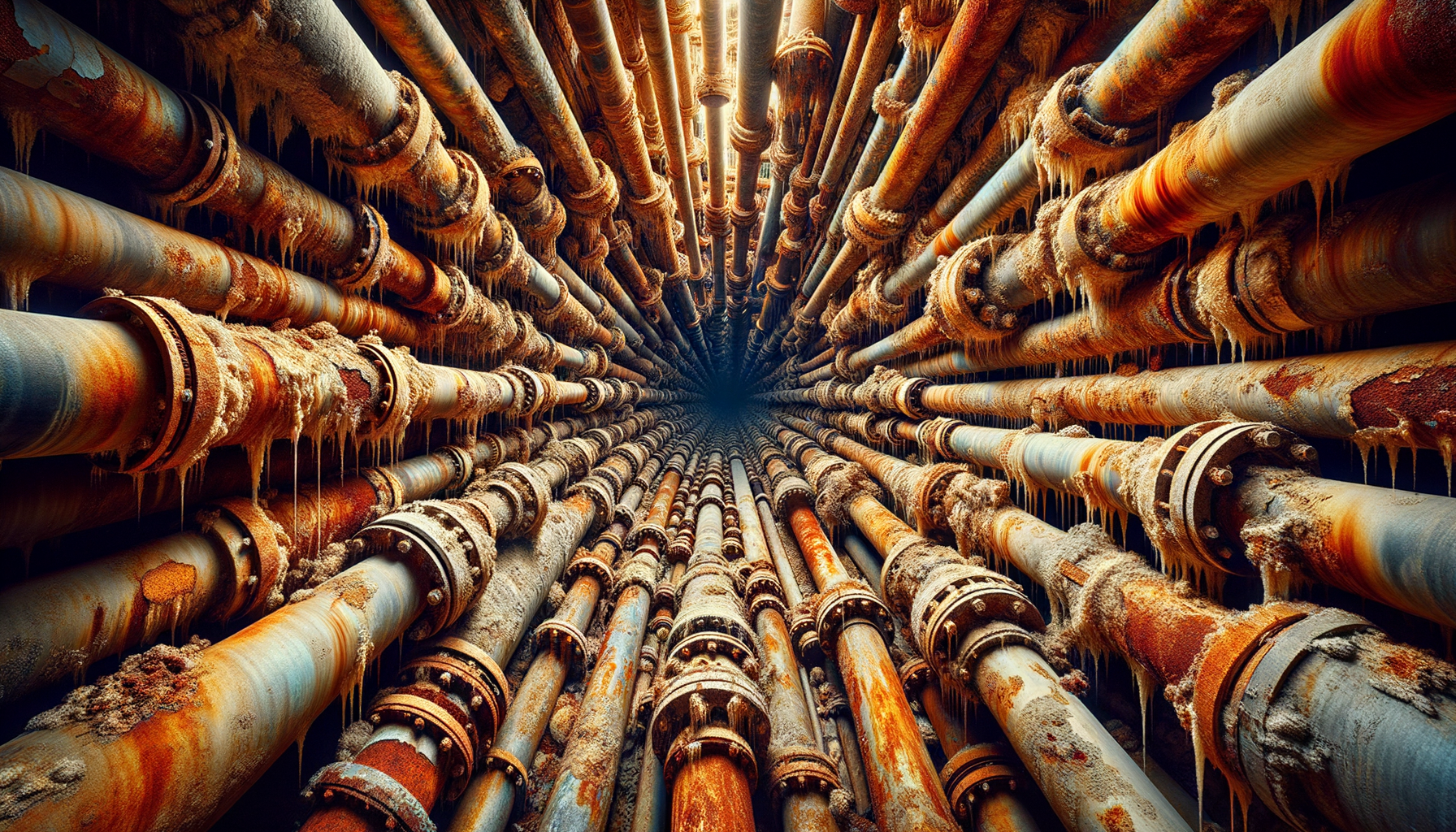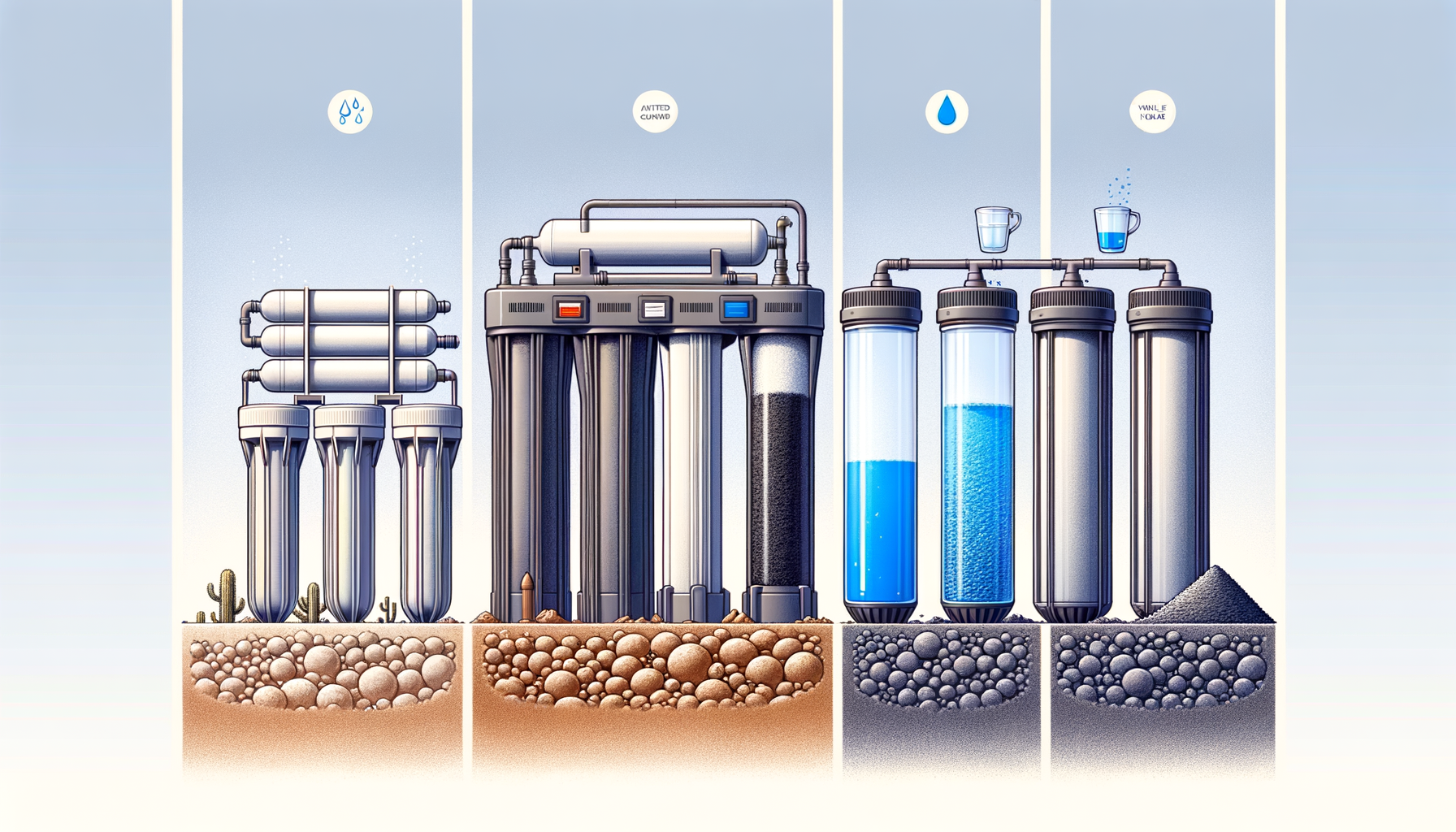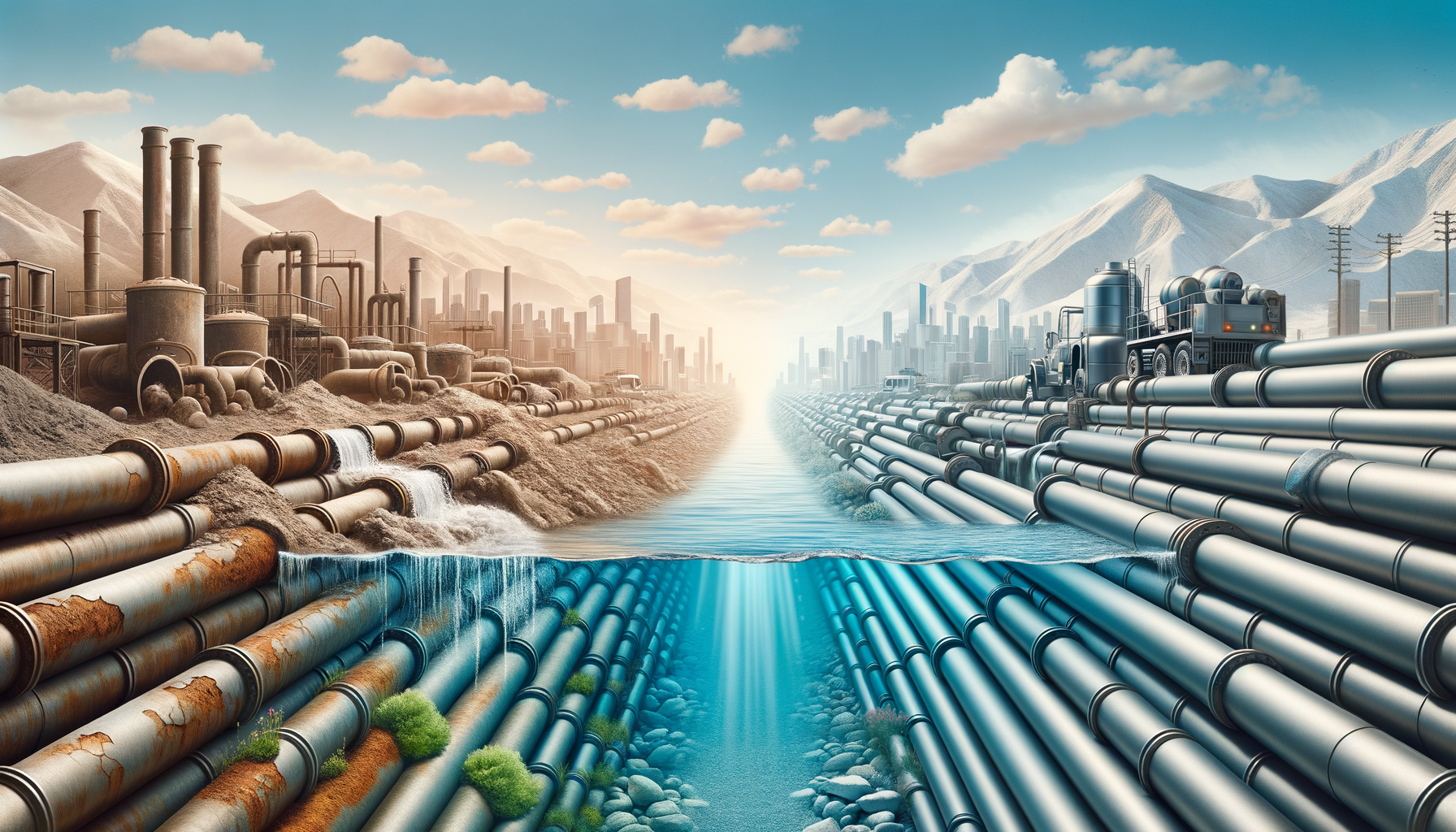Comprehensive Guide to Water Quality in Nevada: Contaminants, Issues, and Water Filtration Solutions
by Ryan Moreau / updated February 13th, 2025
Nevada is a state characterized by its arid landscapes and limited water resources. The state’s water supply primarily relies on the Colorado River, Lake Mead, groundwater aquifers, and seasonal surface water sources. Despite these scarce resources, Nevada faces significant water quality challenges due to factors such as industrial activities, mining operations, agricultural runoff, and naturally occurring contaminants. In this comprehensive guide, we explore the common contaminants in Nevada’s water, regional water quality challenges, and effective filtration solutions. Start by using our Water Quality Tool to get a customized analysis of your local water conditions.
Overview of Nevada’s Water Sources
Nevada’s water supply is critical to its population and economy, given its desert climate and limited precipitation. Key sources include:
- Colorado River and Lake Mead: The Colorado River, stored in Lake Mead, is a primary source of water for southern Nevada, including Las Vegas.
- Groundwater Aquifers: A significant portion of Nevada’s water comes from groundwater pumped from aquifers beneath the desert floor.
- Surface Water from Sierra Nevada: In western Nevada, runoff from the Sierra Nevada mountain range feeds into rivers and reservoirs.
- Local Rivers and Lakes: Rivers such as the Truckee, Carson, and Walker provide water for agriculture and some municipal uses.
Managing these scarce water resources requires careful allocation, conservation efforts, and rigorous water quality monitoring to ensure sustainability and safety for residents.
Common Water Quality Contaminants in Nevada
Nevada’s water sources may contain a range of contaminants due to factors such as mining, industrial activities, agriculture, and naturally occurring minerals. To better understand what might affect your area, start with our Water Quality Tool and then review these common issues:
1. Arsenic
Arsenic is commonly found in Nevada’s groundwater due to the state’s unique geology. Elevated levels of arsenic can pose serious health risks, including skin damage, circulatory system problems, and an increased risk of certain cancers.
Water Filtration Options for Arsenic: Reverse Osmosis Water Filters
2. Nitrates
Agricultural runoff and septic system leakage contribute to high nitrate levels in some of Nevada’s groundwater. High nitrate levels are especially dangerous for infants and pregnant women, causing conditions like methemoglobinemia, also known as “blue baby syndrome.”
Water Filtration Options for Nitrates: Reverse Osmosis Water Filters
3. Radionuclides (Uranium, Radium)
Nevada’s geology, along with historical nuclear testing, has led to the presence of radionuclides like uranium and radium in certain water sources. Long-term exposure can increase the risk of cancer and kidney damage.
Water Filtration Options for Radionuclides: Reverse Osmosis Water Filters
4. Fluoride
While fluoride is beneficial for dental health at low levels, some regions in Nevada have naturally high fluoride concentrations, which can lead to fluorosis affecting teeth and bones when consumed excessively.
Water Filtration Options for Fluoride: Reverse Osmosis Water Filters
5. Total Dissolved Solids (TDS) and Hardness
Nevada’s water often contains high levels of minerals such as calcium, magnesium, and sulfates, leading to hard water. While not harmful to health, hard water can cause scale buildup in plumbing and appliances.
Water Filtration Options for TDS and Hardness: Water Softeners
6. Selenium
Selenium is a trace element that, at high levels, can be harmful to both humans and wildlife. It can enter water supplies from natural deposits and agricultural runoff.
Water Filtration Options for Selenium: Reverse Osmosis Water Filters
7. Volatile Organic Compounds (VOCs)
Areas near industrial sites or with historical gasoline leaks may have VOCs like benzene, trichloroethylene, and perchloroethylene in groundwater. These substances are linked to various health issues, including cancer and liver problems.
Water Filtration Options for VOCs: Activated Carbon Water Filters
8. Microbial Contaminants
Private wells in rural areas may be susceptible to microbial contamination from septic systems or animal waste, leading to bacteria like E. coli and coliforms in water.
Water Filtration Options for Microbial Contaminants: Reverse Osmosis Water Filters with UV disinfection systems can effectively neutralize bacteria and viruses.
Regional Water Quality Challenges in Nevada
Nevada’s unique geography and history present various regional water quality challenges. According to the EPA and the Nevada Division of Environmental Protection (NDEP), key challenges include:
1. Southern Nevada: Overuse of Colorado River Water
Southern Nevada relies heavily on the Colorado River, which is over-allocated and faces dwindling supplies due to drought and climate change. Water conservation and reuse are critical, but concentration of contaminants can become an issue as water is recycled.
2. Mining Regions: Heavy Metals and Acid Drainage
Mining of gold, silver, and other minerals has historically been a major industry in Nevada. Mining activities can lead to contamination of water sources with heavy metals like arsenic, mercury, and lead, as well as acidic runoff that can leach other harmful substances into water supplies (EPA – Mining Sector).
3. Rural Areas: Nitrate and Bacteria from Septic Systems
In rural Nevada, reliance on septic systems can lead to nitrate and bacterial contamination of groundwater if systems are poorly maintained or improperly located.
4. Urban Growth and Water Demand
Rapid urbanization in areas like Las Vegas and Reno increases demand for water and stresses existing infrastructure, potentially leading to issues with water quality and availability.
General Water Characteristics in Nevada
Understanding general water characteristics in Nevada helps in choosing appropriate water treatment methods. Key characteristics include:
1. High Water Hardness
Much of Nevada’s water is classified as hard due to high levels of calcium and magnesium. This can lead to limescale buildup in pipes and appliances, reducing their lifespan and efficiency.
For households experiencing hard water, water softeners are recommended. If you’re unsure whether you need a water softener or which type fits your family’s needs, try our Water Softener Calculator for personalized guidance.
2. High Levels of Total Dissolved Solids (TDS)
Due to the arid climate and geological features, Nevada’s water often has high levels of TDS, including minerals like sulfates and chlorides, affecting taste and potentially leading to health issues for sensitive individuals.
Reverse osmosis systems can effectively reduce TDS levels, improving water quality and taste.
3. Natural Radioactivity
Some regions in Nevada have groundwater with naturally occurring radionuclides due to the presence of uranium and radium in local geology.
- Health Risks: Long-term exposure to radionuclides can increase the risk of cancer and kidney problems.
- Testing and Mitigation: Regular water testing and appropriate filtration can effectively manage these risks.
These contaminants can be addressed with advanced filtration methods such as reverse osmosis and ion exchange systems.
Utilizing the Water Quality Tool for Nevada Residents
Determining the specific contaminants in your local water supply is crucial for effective treatment. Our Water Quality Tool enables Nevada residents to:
- Enter their zip code for a detailed analysis of local water sources
- Access data on common contaminants affecting their area
- Receive personalized recommendations for filtration systems based on identified issues
Recommended Filtration Solutions for Common Nevada Contaminants
To address the specific challenges of Nevada’s water, the following filtration systems are recommended:
1. Reverse Osmosis Systems
Reverse Osmosis Systems are highly effective at removing arsenic, nitrates, uranium, fluoride, and reducing TDS levels. They are ideal for treating groundwater sources with multiple contaminants.
2. Water Softeners
Water Softeners reduce water hardness, protecting plumbing and appliances from scale buildup and improving the efficiency of household cleaning.
3. Activated Carbon Filters
Activated Carbon Water Filters are effective at removing VOCs and improving taste and odor. They can be used in conjunction with other filtration methods for comprehensive water treatment.
Local Water Testing Services in Nevada
Comprehensive water testing is essential for identifying the specific contaminants present in your water supply. We recommend using SimpleLab for detailed water quality analysis. Their easy-to-use kits and thorough lab reports provide the information needed to select the right filtration system.
Case Studies: Addressing Water Quality Issues in Nevada
Understanding how water quality challenges have been addressed in different regions of Nevada can provide valuable insights:
1. Las Vegas Valley: Managing Arsenic and Hard Water
The Las Vegas Valley Water District has implemented advanced treatment processes to manage arsenic levels and water hardness. At the household level, residents often use reverse osmosis systems and water softeners to further improve water quality.
2. Rural Communities: Addressing Nitrate Contamination
In farming areas where nitrate contamination is a concern, residents have installed point-of-use reverse osmosis systems to ensure safe drinking water, along with regular testing to monitor nitrate levels.
3. Reno-Sparks: Tackling TDS and Mineral Content
In the Reno-Sparks area, high TDS levels have prompted many homeowners to install whole-house filtration systems to reduce mineral content, thereby improving water taste and reducing maintenance on plumbing and appliances.
Call to Action
Nevada’s unique environmental conditions and water scarcity issues make water quality management a critical concern for residents. By understanding the specific contaminants and regional challenges, you can take proactive steps to ensure the safety and quality of your water supply.
Begin by entering your zip code into our Water Quality Tool for a detailed analysis of your local water conditions. Explore our filter review articles to find the most effective solutions tailored to your needs. Finally, confirm your water’s safety with comprehensive water testing services to ensure you have clean, safe water for your household.


